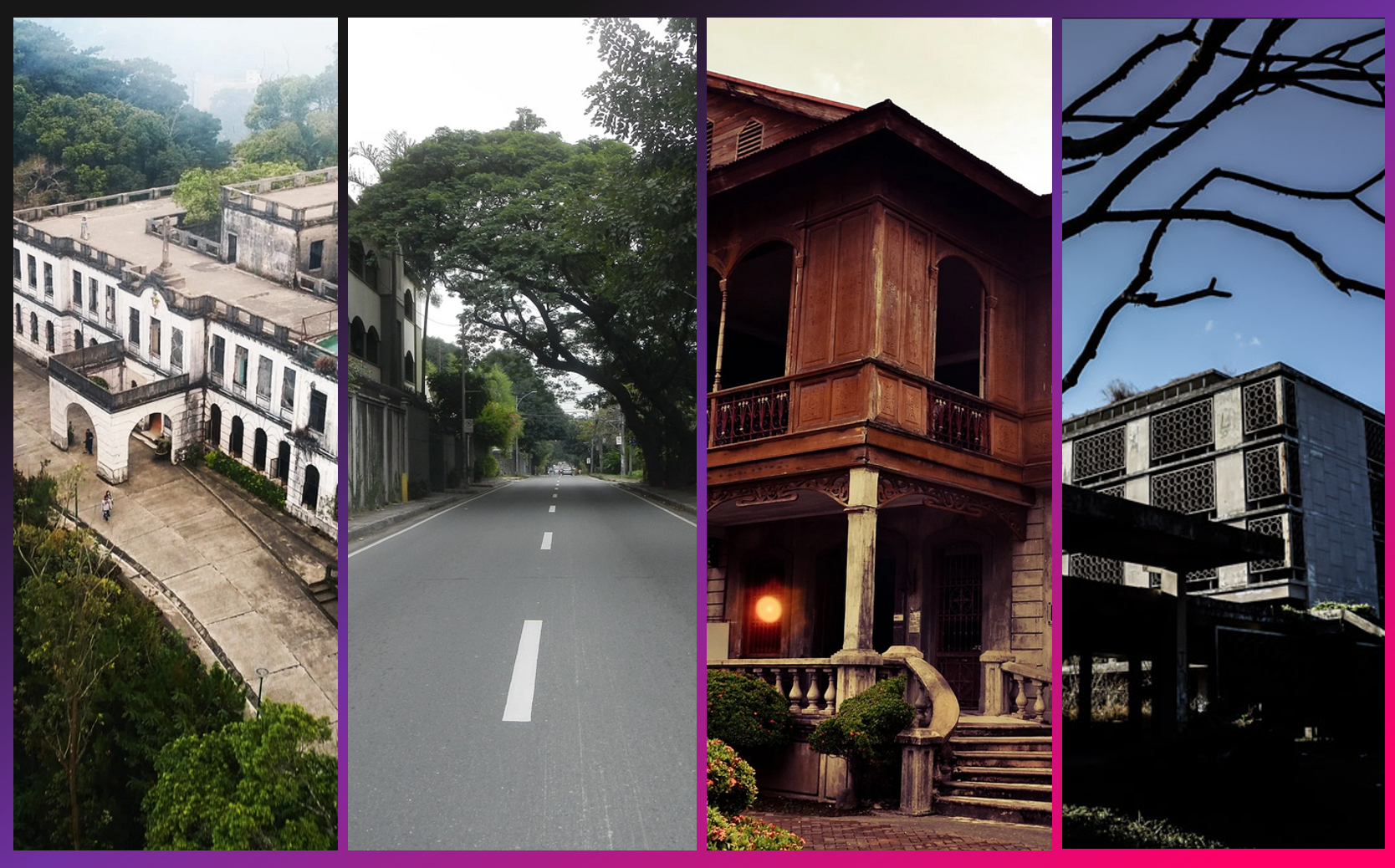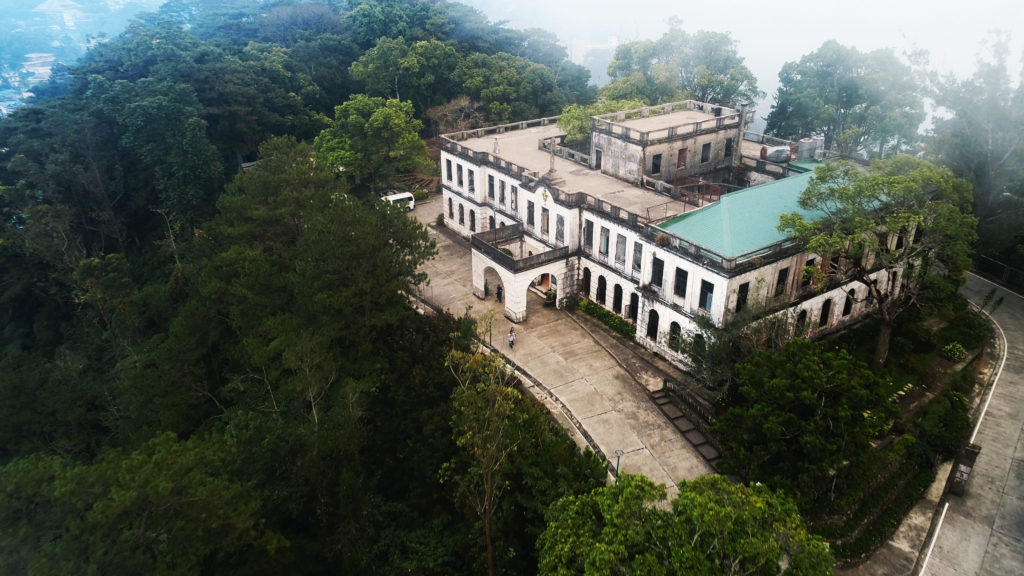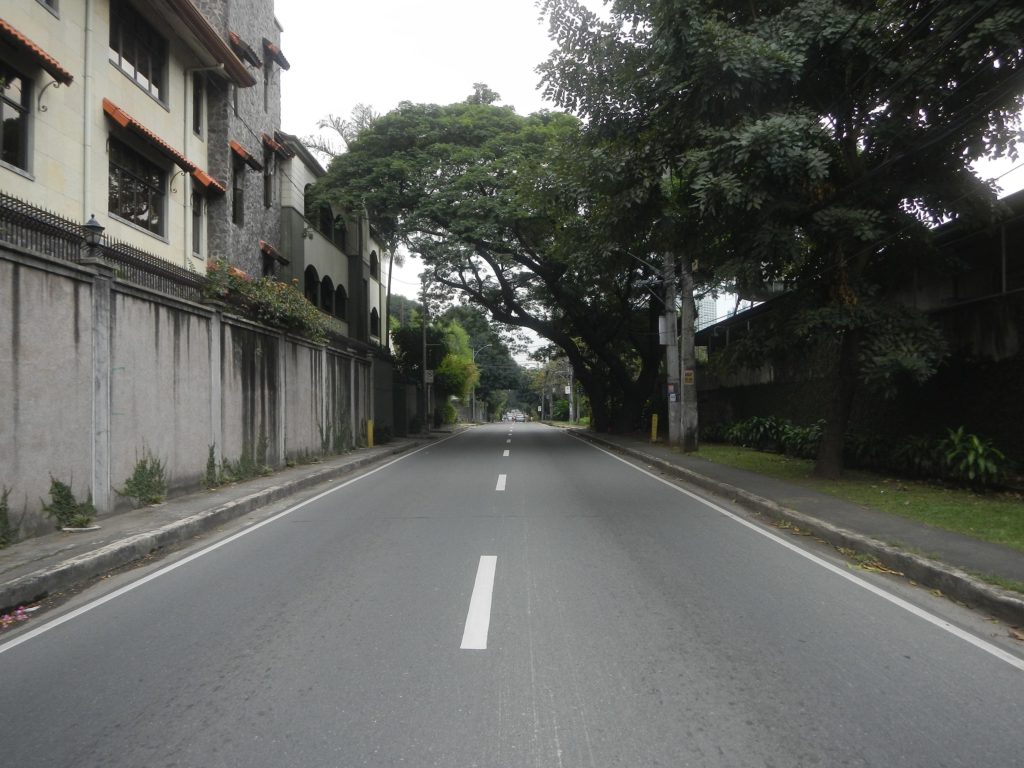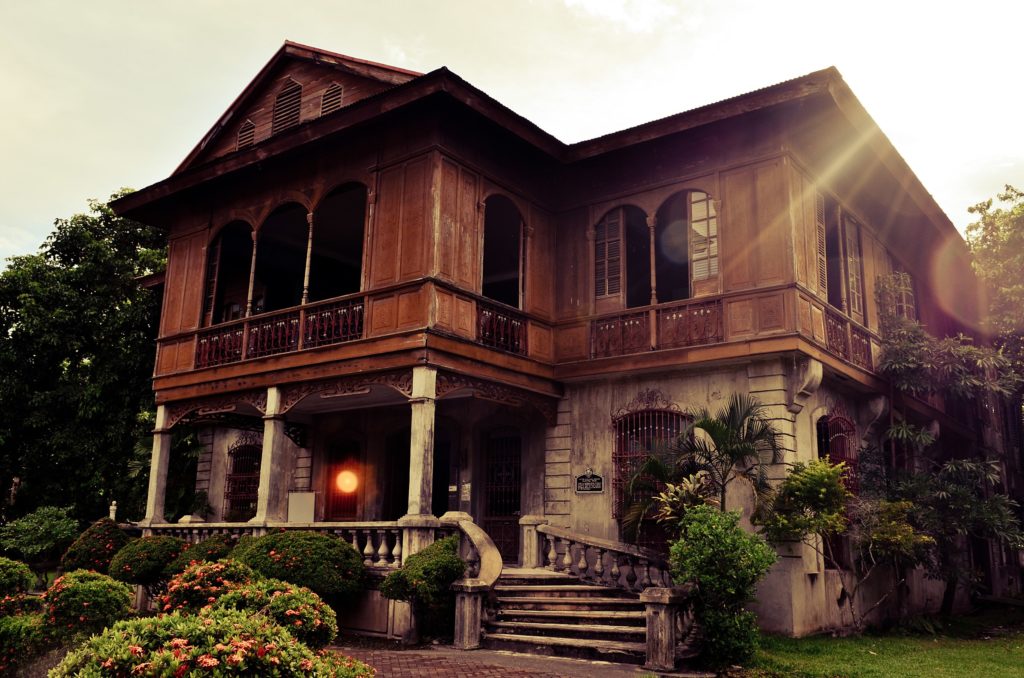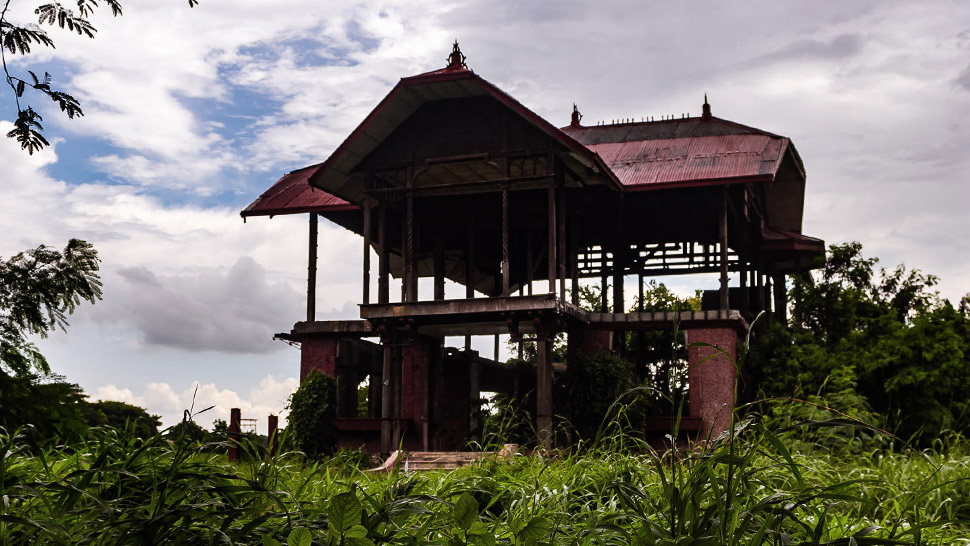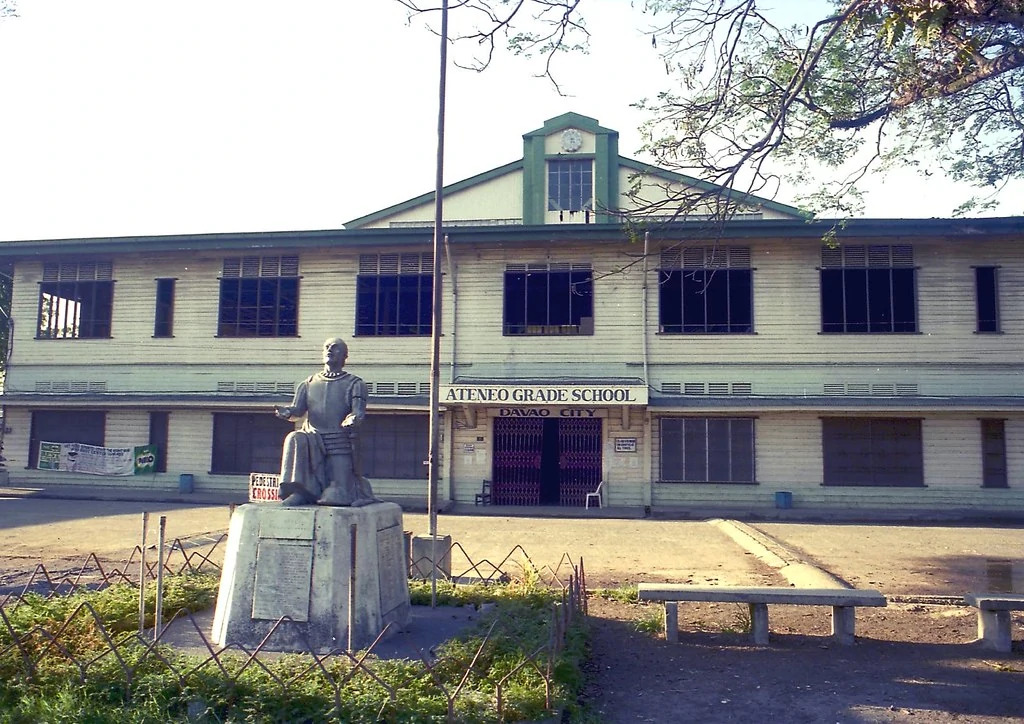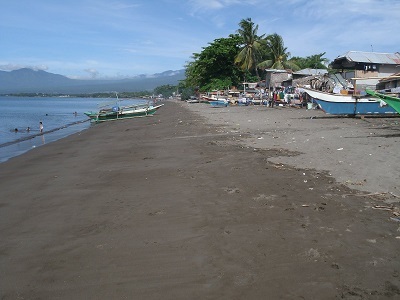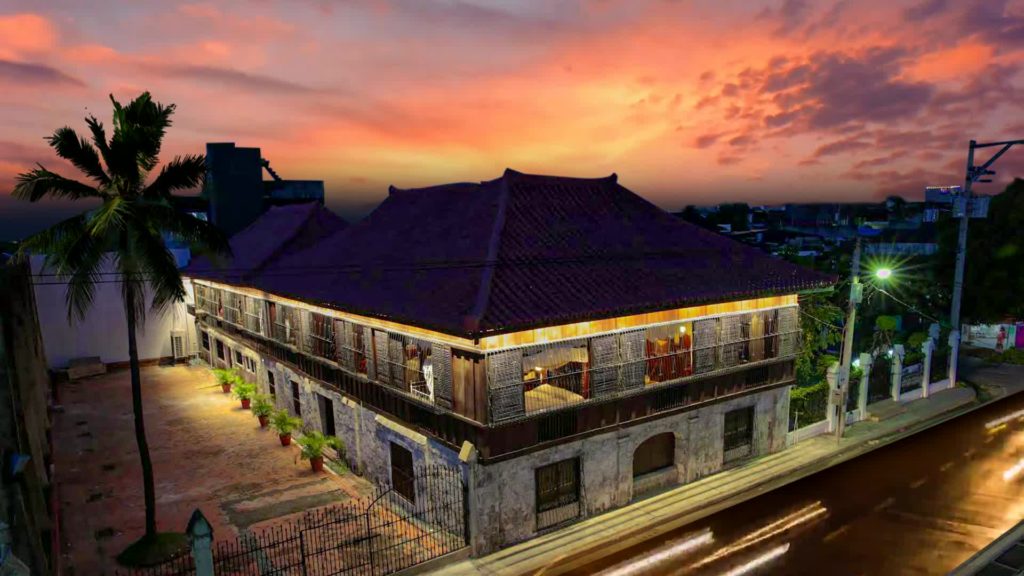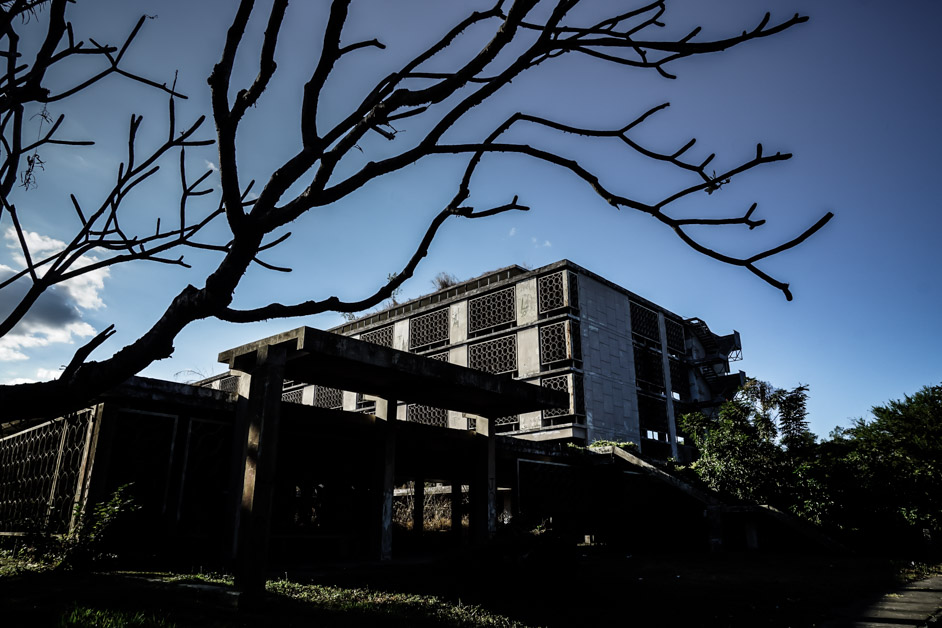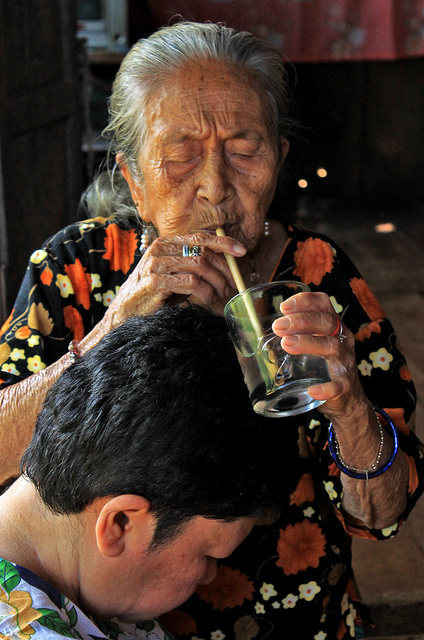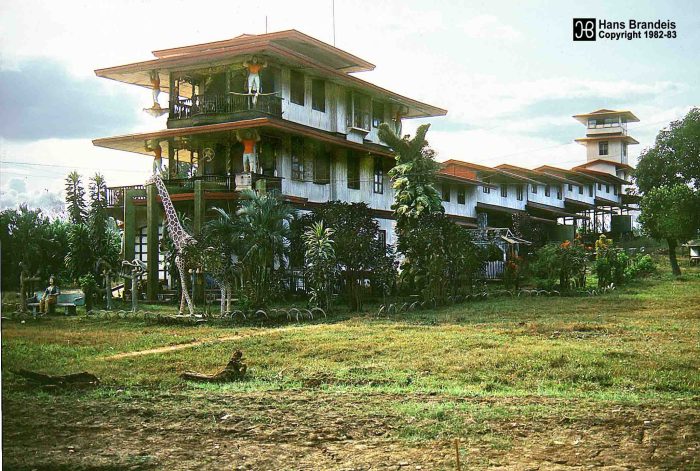These places are not just good locations for a spooky good time, they are also a treasure trove of information about our culture and history (which we need to learn more of, tbh). Check these haunted and creepy places in the Philippines:
The Diplomat Hotel (Baguio City)
Officially named as the Baguio City Heritage Hill and Nature Park, but still widely known as The Diplomat Hotel, it is one of the most famous haunted places in the country and one of the most historical ones at that.
Based on its historical marker, the structure was built in 1913 and was finished by the year 1915. It was called the Dominican Hill and Retreat House which served as a vacation house for the Dominicans. It was turned into a school called the Colegio del Santissimo Rosario but was reverted back into a retreat house in 1918 due to a lack of students.
During World War II, the building was turned into a camp for refugees who have escaped the Japanese army, but the area was eventually invaded.
It was converted into a hotel in 1972 and was managed by Agapito “Tony” Agpaoa, a spiritual faith healer, businessman, and psychic surgeon, who later on used the place as a healing center for his patients. After his death in 1987, the hotel ceased operations and was temporarily closed to the public.
In 2004 it was declared a Cultural Property by the National Historical Commission of the Philippines. To date, it continues to gather an influx of visitors due to its eeriness and overall haunted vibe (which you can check out for yourself). Some say they still see ghosts of patients walking around the premises.
Corregidor Island (Cavite)
Corregidor is an island located at the entrance of Manila Bay in the southwestern part of Luzon in the Philippines. It is a national shrine that commemorates the U.S. and Filipino forces who fought the Japanese during World War II.
The Spanish fortified it during the 18th century and was used as a registration site for ships entering the bay. Gen. Douglas MacArthur chose the island as one of his major defense positions, but fell on April 9, 1942. U.S. forces then regained the island in 1945. The rest is history.
The island is considered haunted because of its history. The ruined buildings are notorious for ghost stories especially the Old Corregidor Island Hospital as it is said that it harbors the most ghosts. Many people claim to hear cries, screams, and footsteps of soldiers being treated at the hospital. Some even say that they hear noises that make it seem like the hospital is still in operation.
Another site in the island is the Malinta Tunnel which also has a rich history at it was used as a bomb shelter, military storage, office space, and infirmary. It is said that 3,000 Japanese soldiers committed suicide here to avoid capture, which has left a very large amount of paranormal energy. Sightings of figures dressed as soldiers are seen here and certain cold spots have been identified.
In New Manila, Quezon City, there is a two-way street called Balete Drive, and it connects thoroughfares such as E. Rodriguez and N. Domingo streets. The street received its name because of the giant Balete trees that used to sprawl the area alongside huge Spanish houses.
It is said that on random nights people would see a “white lady” on the street. The White Lady is a female ghost typically dressed in white and is associated with countless versions of local legends of tragedy. This story dates all the way back to the 50s and continues to be told up to the present day.
One story, as retold by a Barangay officer living near Balete Drive, says that the lady was a student from the University of the Philippines who was molested and murdered by a cab driver on her way home, her body thrown near a Balete tree. Since then her spirit has been haunting the neighborhood, trying to seek for justice, or looking for the perpetrator.
Another version claims that a lady that lived in one of the mansions along the street was killed by her family and now signals to every car that passes by to seek help.
Many stories of the white lady are still being told to children up to this day in an effort to scare them. Whether or not the lady from Balete Drive is real or not still leaves people wondering and afraid to go through the place, especially at midnight.
Balay Negrense (Negros Occidental)
Balay Negrense was originally the home of Victor Fernandez Gaston, a pioneer of the sugar industry in the Negros Island. In the 1890s they commissioned the construction of the Balay Negrense for him and his 12 children. Construction was completed in 1901 and was considered one of the largest houses on the island.
After his death in 1927, the house was passed on to his children and eventually abandoned in the mid-1970s, leaving it vacant and in dire need of repair for years. Years later again, the Negros Cultural Foundation proposed to the Gaston heirs that the house should be rehabilitated and restored with the help of the Philippine Tourism Authority (PTA) and that the ancestral home be converted into a museum.
The structure was eventually repaired and decorated with period furniture, with the help of donations from prominent individuals and the Department of Tourism. The museum was officially inaugurated on October 6, 1990.
Visitors to Balay Negrense have reportedly experienced paranormal encounters while inside the house such as feeling like they were being watched or seeing people in old-fashioned clothing partying in the house’s ballroom. Rooms with mirrors make you feel like someone might appear at any time and at night, people say you might hear the kalesa at the back of the house.
Manila Film Center (Pasay City)
The construction for the center began in 1981, as then First Lady Imelda Marcos wanted her ambitions to come into fruition–she wanted to build the Manila Film Center to host the 1982 Manila International Film Festival. She said the Philippines is in a strategic position to be an international marketplace for films, and it made sense to host the festival here.
It was designed by Froilan Hong, conceptualized by Ramon M. Ignacio and was inspired by the Parthenon in Athens, Greece. It had a 360-degree theater, film laboratory, and film archive center. Contractors had less than three months to complete the project so construction was non-stop and had 4,000 laborers working three shifts every 24 hours.
On November 17, 1981, at around 3 AM, scaffolding on the fourth floor collapsed and the workers were trapped in quick-drying cement. The cement was poured on each floor but they did not wait for it to dry anymore because it was a rushed job. At least 169 workers died in the incident.
A number of rituals have been carried out at the Manila Film Center in an attempt to drive away lost souls but up to this day, some still believe that the building is still haunted with cries of people being heard and mysterious winds being felt along with seeing some shadowy figures.
Bahay na Pula (San Ildefonso, Bulacan)
Bahay na Pula is a lone house beside the highway near the border of San Miguel and San Ildefonso, Bulacan. Surrounding the area are a bunch of tamarind and camachile trees. It got its name from its blood-red color that stands out in a green field.
Built in 1929 by Don Ramon Ilusorio, the house’s color turned out to be a foreshadowing of the crimes that it bore witness to. During World War II, Japanese forces took ownership of the house and used it as one their barracks. The town was suspected by the army to be a base of the Hukbo ng Bayan Laban sa Hapon or Hukbalahap.
[Trigger warning]
Men were rounded up and beaten to death while others had their genitals hacked off and were forced to eat them. Bodies were thrown into a pile and set on fire. Women on the other hand were brought to the house and were repeatedly raped, with some being as young as eight or nine years old.
Locals believe that the house is haunted due to some seeing ghostly apparitions from the windows and veranda. Others claim they heard cries of help, most likely from the souls who have died there. People from nearby villages claim they continue to dig up skulls in the area.
Ateneo de Davao University
The Ateneo de Davao University is one of nine schools operated by the Jesuits. It first opened in June 28, 1948. It first offered elementary and high school subjects and eventually offered evening college courses when the Jacinto campus was obtained in 1951.
Before it became a school, however, it was a Japanese airfield in World War II, so it kind of makes sense to have multiple ghost stories emerge from it. One tale tells of a security guard who heard a telephone ringing in the demolished building and upon answering it, there was a man who was muttering in another language that somewhat resembled Nihonggo (Japanese language).
Other stories tell of apparitions at a statue near the old grade school chapel and some classrooms in the high school area are said to be haunted by dearly departed students. In some Acacia trees in the campus, some say there are friendly dwarves that occasionally appear to groups of people.
Talomo Beach (Davao del Sur)
Talomo Beach is located just a few kilometers from the heart of Davao City and features multiple retreat houses. It is one of the most popular beaches in the province and also entails a rich history.
During the 1920s, Japanese businessmen came to Davao and set up their establishments in Talomo. The presence of these establishments made the place the commerce and trade center for Davao. In the 1940s the town of Talomo was known as “Little Tokyo” in Davao as houses were built exclusively for Japanese families.
After the bombing of Pearl Harbor, Japanese bombers attacked a battery station at Libby Road on December 8, 1941 with many residents evacuating to safer places while some stayed behind. Some residents who stayed behind experienced some of the soldier’s brutalities but eventually Japanese foremen became soldiers and assured the safety of the residents in the area and helped the evacuees return to Talomo.
The haunting comes from the row of retreat houses found along the beach where people say spirits of deceased children could be heard. Using a Ouija board, a group of college students conducted séance sessions to contact ghosts in the area and found out the spirits were children who have drowned on its shores.
Gorordo Museum (Cebu)
The Museum was originally the house of Juan Gorordo, the first Filipino bishop of Cebu. It was built in the 1850s and originally owned by Alejandro Reynes y Rosales. It was then bought by Isidro Gorordo, a merchant from the Basque province of Vizcaya in Spain.
It is a living example of a colonial era house known as “Balay nga Tisa” or house with tiled roof. It combines Spanish and Chinese architecture and is unique to the Philippines because of its cultural blending of eastern and western influences.
It is located in the Parian, a historic district that can be traced back all the way until 1614 with the place being settled by immigrants from China. The settlement evolved into a bustling commercial hub in the next two centuries. The Gorordos took residence in 1863 and by this time the neighborhood was already filled with wealthy people.
Caretakers of the museum and the house said that they have seen an apparition of a woman sitting outside the lot’s private chapel. According to the staff these are not of the bishop but from one of his spinster sisters.
Clark Airbase Hospital (Pampanga)
The Clark Airbase Hospital was constructed during the early 1900s and was used as a military hospital to treat wounded soldiers during World War II and the Vietnam War. It was in operation until 1991 but was halted due to Mount Pinatubo’s eruption that blanketed the structure in volcanic ash.
Ghost stories in the old hospital include some people hearing echoing voices as well as screams of agony. It is said that these were voices of past patients and soldiers who died in the war.
In the first floor, cries of babies could be heard and accounts of running footsteps from a child could also be heard. Some claim that figures of someone crouching down and peeking at them from pillars can be seen while full-body apparitions would appear in the morgue.
Other visitors also claimed that they would get horrible and intense nightmares after they had visited the hospital.
Siquijor Island
Known as the third smallest province in the Philippines, Siquijor island is notorious for its mystical stories and activities of black magic. It is popular for its mountain dwelling healers (mangkukulam) who brew traditional ointments for modern ailments.
Siquijor bears the name of “Island of Witches” and it all started back during the Spanish times of the 1660s. It was known as the main route for trade and merchandise in Visayas. During the voyage of many Spaniards, crew members would start feeling ill and asked locals to do all they can to cure them. As they learned of their mysterious efforts to heal the crew, the Spaniards distanced themselves from the locals and called them witches which in turn makes the place the “Island of Witches.”
Today, the so-called witches are known as “mananambal” and they practice their traditional healing process as a sign of a great culture.
One of the practices include the Bolo-bolo healing which consists the use of a bottle, a black stone, water, and a straw. Inside the bottle contains the water, the stone, and the straw. The healer will blow into the straw until there bubbles start to appear. It is said that these particles are the bacteria being removed from the person. Tourists find the unexplainable result quite bizarre but at the same time very creepy.
Torre ni David (Malaybalay, Bukidnon)
Travelers traversing along the Sayre Highway will notice a strange looking structure because of its peculiar layout of rooms that appear to be slightly elevated from each other. The lot also contains man and animal sculptures that look very Baroque-like.
The house was originally built in the 1950s and was originally called “Casa Alegre” but dubbed by local residents as “Torre ni David.” The three-story residence was built by David Valmorida and says that he built it one room at a time, adding a new segment ever time a new child was born, thus the seemingly disjointed series of seven buildings.
Adding to its picturesque charms are wooden carvings of eight men with the same faces and clothing carrying the four corners of the second and third floors on their shoulders.
David’s family members have claimed that they experienced paranormal activities around the area of the house such as hearing a lady crying during a full moon, tales of dwarves near the trees, and mysterious ladies having a party outside the house although they hadn’t personally seen them.
Other POP! stories you might like:
5 Cold cases in the Philippines that continue to pique the curiosity of Filipinos
How Regal Films changed the Philippine horror movie landscape
8 TV shows that scared the daylights out of Pinoy viewers
Buzzfeed Unsolved releases ‘Dark Horrors of the Philippines’ series
Winnie the Pooh has become public domain, and now he’s in a horror film

